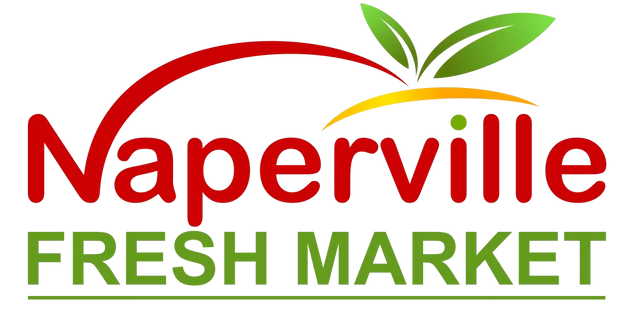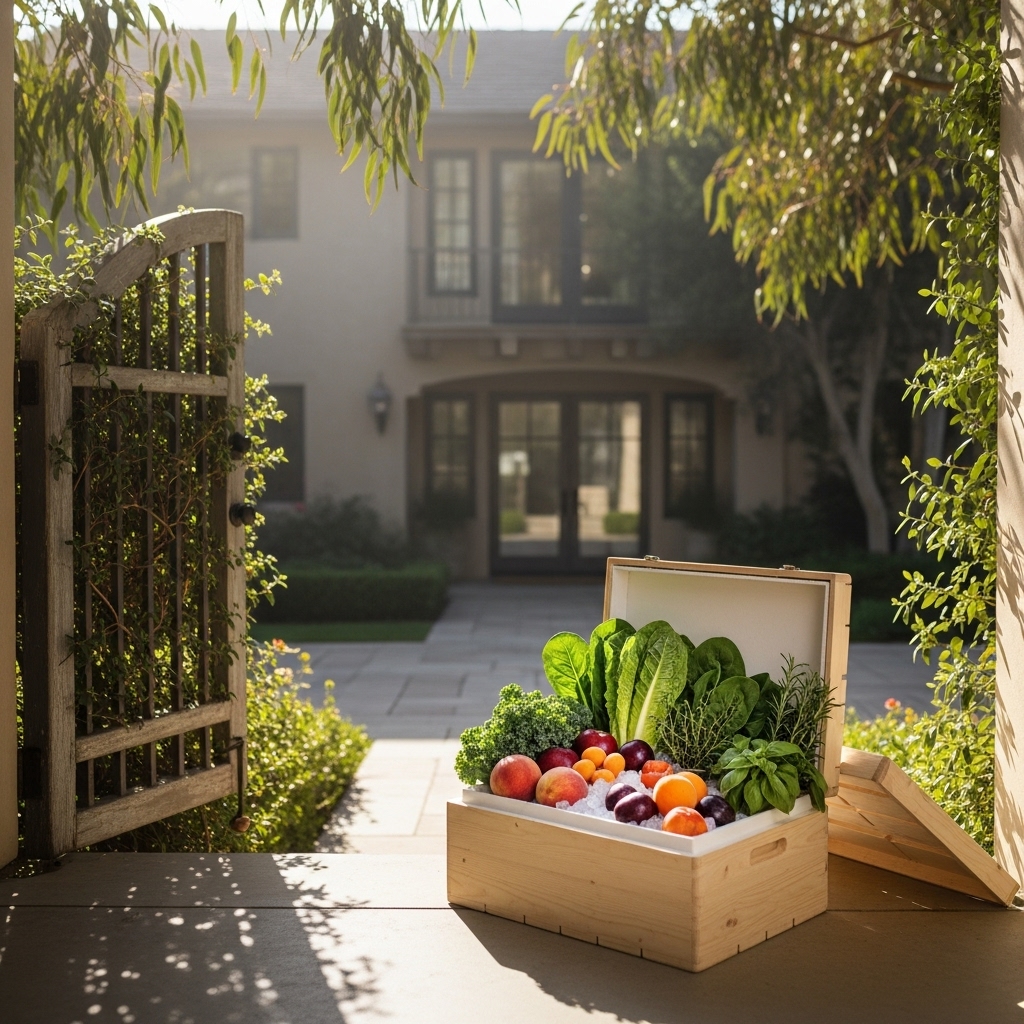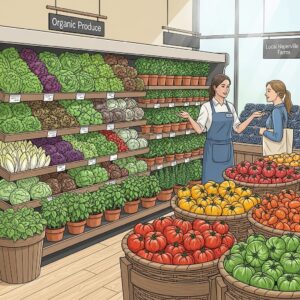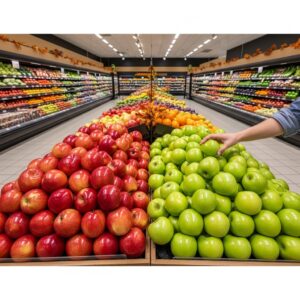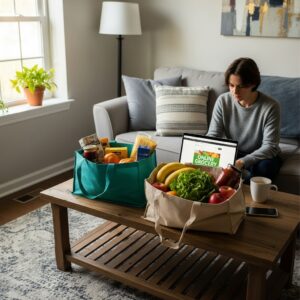If you live in Malibu, you know that groceries aren’t just about a quick errand; they’re about navigating canyon switchbacks, coastal fog, and the kind of ocean views that slow a person down. That’s why produce delivery has become a quiet hero for locals who want peak-season fruits and vegetables without sacrificing a morning to traffic on the PCH. When the right box lands at your doorstep—cold to the touch, fragrant with herbs—it feels like a friendly knock from the farm. As you sketch out your weekly meals, taking a moment to scan the weekly deals can help you build a plan around what’s truly in abundance, minimizing waste and keeping your cooking aligned with the season.
The best delivery services treat Malibu like the mosaic it is. They understand that an address on Point Dume isn’t the same as a rental tucked off Latigo Canyon, and that many of us rely on clear communication to coordinate gates, dogs, and long driveways. A good driver will message when they’re fifteen minutes away, place the box in the shade, and tuck a note under the lid with the grower’s names. Over time, you feel like you know the farmers by their greens: the tender frills of a Calabasas lettuce, the deep-purple eggplants that come from a sunbathed stretch near Camarillo, the strawberries with a perfume only the Oxnard Plain seems able to conjure.
How Malibu Delivery Works Behind the Scenes
It starts the day before, when packers translate field notes into boxes. If it was cool overnight in the canyons, expect crisp radishes and lettuce. If a heatwave rolled across the flats, tomatoes and melons dominate, packed with ice sheets to keep temperatures steady. Drivers head out early to beat traffic, hugging the coast before branching up Kanan, Malibu Canyon, and to the tight turns of Encinal and Decker. The best routes are choreographed to keep cold-chain integrity intact; you can tell by the condensation just inside the lid when you open your box.
Good services let you tailor the experience. Maybe you cook for a family that eats salad nightly, or maybe you’re a surfer who needs portable snacks after dawn patrol. Customization can mean extra greens in spring, more stone fruit in summer, or a double order of avocados when trees hit their stride. For adventurous cooks, a rotating Chef’s Choice selection is fun, introducing unusual items like shishitos, romanesco, or lemon cucumbers. The art is balancing surprise with utility so nothing languishes in the crisper.
The Joy of a Seasonal Box
Opening a weekly box teaches you to think like a farmer. In winter, you’ll find oranges, mandarins, and frost-sweetened carrots, plus sturdy greens like chard and kale that love cool nights. Spring wakes with asparagus, peas, strawberries, and herbs that smell like the garden after rain. Summer is opulent: tomatoes you can slice with a dull knife, cucumbers that snap, basil that perfumes the kitchen. Fall brings the russet colors—persimmons, pomegranates, squash—and a return to slow, warm cooking. Your meals begin to reflect the landscape, whether or not you step foot at the market that week.
Delivery doesn’t need to mean distance from community. Many services partner directly with growers you meet at weekend stalls, acting as a midweek bridge when your schedule keeps you home. Over time, you notice the signatures: the farm whose lettuces never wilt, the one with carrots so crisp they seem electrified, the orchard that sends out stone fruit with a blush like sunset. When your box arrives, you unpack with a plan: tender greens tonight, tomatoes at peak tomorrow, squash that can wait until the weekend.
Matching Your Cooking Style to Delivery
Think of your delivery like an invitation. If you cook simply, rely on the natural flavor of what’s inside. Drizzle olive oil over sliced tomatoes, shower with basil, serve with a ball of fresh cheese and good bread. If you love to explore, pair items creatively: cucumbers with stone fruit and herbs, zucchini shaved thin with lemon, herbs, and a flick of chili. The point is to let the box guide your week, not to force it to match a rigid list. Malibu cooking feels best when it’s nimble, with room for a late-afternoon swim or a last-minute sunset picnic.
On busy weeks, I plan anchor meals. A grain salad with chopped cucumbers, tomatoes, and herbs becomes lunch and a side dish for grilled fish. A tray of roasted squash or carrots sets up a quick midweek soup. When strawberries are abundant, I macerate half with lemon and freeze the rest for smoothies. The tiny rituals—washing greens as soon as the box arrives, trimming herb stems and standing them in water, tucking berries into a shallow container—turn a delivery into days of easy meals.
Cold Chain, Packaging, and Sustainability
No two Malibu driveways are the same, and that matters for packaging. The best services insulate with recyclable materials or reusable liners and swap them on the next delivery. Ice packs keep temperatures stable as boxes ride the last miles up canyons or sit by a gate while you finish a Zoom call. If you’re out, a shaded drop spot makes a big difference; even a porch mat can act as a temperature buffer against hot pavers. Communication helps: leave a note in your account about dogs, gate codes, and where to stash the box if fog gives way to sun.
Many locals appreciate light-touch packaging. Bundles of greens tied with twine, paper pints for berries, compostable bags for loose items—little decisions that respect the landscape we love. When possible, I set out last week’s liners for pickup, turning delivery into a tidy loop. It’s satisfying to watch that loop tighten over time as services learn your home’s quirks.
Navigating Malibu’s Weather and Roads
Weather is a character here. Marine layers can keep mornings cool, making deliveries easy, while late-day heat comes hard and fast. Winter rains test both roads and timing; a good service has contingency routes if the canyon closes and texting protocols so you know where your box is. During high-wind days, communication matters even more, ensuring lightweight packaging doesn’t go airborne and containers are stowed safely. These are the details you notice only when a driver truly knows the coast.
Communication also shines during emergencies. Wildfire seasons remind us to plan with flexibility. Services that can pause, reroute, or hold boxes when evacuation orders are in place become trusted partners, not just vendors. Your food keeps pace with your life, which is exactly what delivery should do.
Midweek, when schedules feel tight, I sometimes browse the weekly deals for inspiration. Seeing which items are peaking sparks smarter substitutions—cucumbers instead of celery in a salad, or persimmons standing in for apples in a slaw. Little pivots make dinner feel breezy and reduce the pressure to find a specific ingredient at the last minute.
From Box to Plate: Simple Meal Ideas
Make a habit of a big salad on delivery day. Wash and spin lettuce, slice cucumbers and tomatoes, add a handful of herbs, and keep it undressed until dinner. While you’re at it, roast a tray of whatever roots arrived; they’ll be the backbone for grain bowls, omelets, or quick tacos. If peaches or plums are in the box, grill halves while the coals are hot from anything else you’re cooking, then spoon yogurt on top for dessert. Simplicity here is a kind of luxury, the kind that leaves room for a walk on Zuma or an hour reading on the deck.
For nights when the ocean breeze feels like an invitation, make a cool, no-cook spread. Slice tomatoes and stone fruit, toss with torn basil, and set out soft cheese. Slice cucumbers and fennel thin, dress with lemon and olive oil, and serve next to grilled bread. If you have fresh corn, cut kernels straight onto a platter and toss with herbs and a squeeze of citrus. Malibu meals don’t need to be complicated; they need to taste like where we live.
Building Trust With Your Service
Successful delivery is a relationship. Rate your boxes, leave notes about what hit and what missed, and celebrate the wins. Drivers remember the house with the dog that barks but doesn’t bite, the gate that sticks, the shady corner by the bougainvillea. In return, you get boxes that arrive exactly where you want them, at times that align with your rhythm. Over time, your deliveries feel custom even if they started as templates.
For newcomers, the first month is a gentle learning curve. You’ll adjust portion sizes, learn which items you fly through, and which you prefer every other week. Don’t be shy about pausing or skipping a box if you’re away; nothing sours the experience like produce you can’t enjoy. Think of it as an evolving plan rather than a fixed contract with your kitchen.
Frequently Asked Questions
How do I choose the right delivery service for my Malibu neighborhood?
Look for a provider with local routing knowledge and clear communication. Ask how they handle canyon access, gated entries, and shaded drop spots. A good match will have flexible scheduling and a track record with homes near yours, whether you’re on Point Dume, Big Rock, or tucked off a winding road.
Can I customize what’s in the box each week?
Most services offer some level of customization, from swapping staple items to opting into seasonal features. The goal is to align the box with how you cook, so don’t hesitate to request extra greens, more fruit, or to skip duplicates you won’t use.
What if I’m not home when the box arrives?
Share drop-off instructions in advance. Shaded porches or a cooler by the door are helpful. Reliable services maintain cold-chain practices with ice packs and insulation; your produce should arrive crisp even if you’re out for a few hours.
How do services handle severe weather or road closures?
Experienced teams build contingency routes and communicate delays in real time. In cases of heavy rain, wind, or closures, they may adjust timing, reroute, or hold delivery to protect quality. Clear texts or emails help you plan meals accordingly.
Is the produce organic?
Many offerings are organic or come from growers who use low-input methods. Transparency matters more than a label; reputable services list farms and practices so you can make informed choices week by week.
What can I do to make produce last longer?
Wash and dry greens right away, store herbs like bouquets in water, keep berries in a shallow container, and leave tomatoes at room temperature. Plan meals so the most delicate items are eaten first, saving sturdier vegetables for later in the week.
Can I return or reuse packaging?
Increasingly, yes. Many providers collect liners and ice packs during the next delivery. Setting them out by your door completes the loop and reduces waste.
How do substitutions work if an item is out of stock?
Most services use seasonally appropriate substitutes, prioritizing items with similar flavor and function. Clear labeling and a quick note inside the box help you pivot recipes without stress.
When delivery day lines up with a busy schedule, a little planning turns a box into the week’s anchor. Keep a short list of go-to meals, lean on simple techniques, and let the symbols of the season—strawberries in spring, tomatoes in summer, citrus in winter—do the heavy lifting. And if you want an extra nudge toward what’s peaking now, scan the weekly deals before you finalize your order; it’s a small step that often leads to inspired cooking and fewer errands.
If you’re ready to spend more time at the beach, on the trail, or lingering over dinner and less time in the car, make delivery part of your routine. Choose a service that knows our roads, respects the weather, and celebrates our farms. Set your preferences, communicate your drop-off details, and let the season surprise you. To sketch out your first week of market-inspired meals, check the weekly deals, pick a few anchor recipes, and enjoy the feeling of opening a box that tastes like Malibu.
